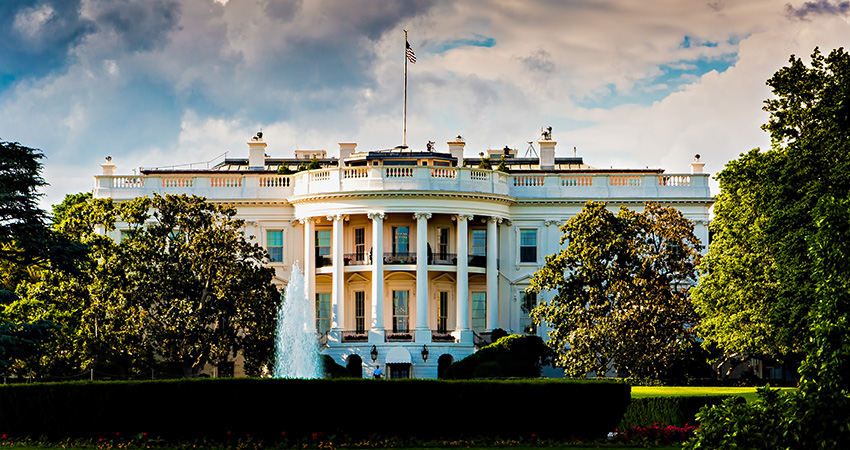
President Biden on April 28 unveiled the second half of his infrastructure agenda, the American Families Plan. Released just weeks after the American Jobs Plan, this new proposal is focused on providing educational, child care, family and workplace benefits. Notably, the $1.8 trillion proposal would be financed by significant tax increases that would directly impact the multifamily industry. As outlined below, the proposal would impose steep increases on tax rates and capital gains while eliminating carried interest, curtailing like-kind exchanges, and repealing stepped-up basis.
State of Play
Prospects for enacting the American Families Plan are uncertain. Some Democratic members of Congress would like to see the proposal processed alongside the Administration’s previously released $2.25 trillion American Jobs Plan that is focused on traditional infrastructure. However, others would like to first pass a traditional infrastructure package in a bipartisan manner before moving to a second proposal.
Additionally, it is unclear that all Democrats would support the Administration’s proposed tax increases, which Republicans are likely to unilaterally oppose. With their narrow majorities, Democrats will have little margin in the House and no margin in the Senate to approve extraordinarily significant revenue increases. Given this political reality, many of the Administration’s proposals may need to be modified to win approval or will end up being dropped. As Congress moves forward, NMHC will continue to educate policymakers about the key role these tax provisions play in the multifamily industry.
Analysis of Proposals
Use the drop down feature below to explore the key proposals in the American Families plan that would impact the multifamily industry:
Individuals pay ordinary income taxes at rates of up to 37 percent as they earn wages. The Biden Administration seeks to increase the top marginal rate to 39.6 percent.
- Capital gains have since 1991 been appropriately taxed at lower rates than ordinary income as they are derived from investments in capital assets and entail risk.
- Multifamily developers and investors take risks when investing in apartment properties, including affordable properties and / or properties in difficult-to-develop areas, and positive returns are never guaranteed.
- The lower capital gains tax rate is designed to incentivize developers and investors to take such risks. Doubling the capital gains rate would diminish entrepreneurial activity.
- Carried interest should receive capital gains tax treatment because it represents a return on an underlying, long-term capital asset, as well as risk and entrepreneurial activity.
- In contrast, any fees that managing partners receive in payment for operations and management activities are taxed as ordinary income.
- Taxing carried interest at ordinary income tax rates will discourage real estate partnerships from investing in new construction at a time when demand for apartments continues to grow and chronic underbuilding has limited new housing supply.
- This proposal would effectively add another 3.8 percent to the applicable capital gains tax rate even capital gains from an active trade or business. This means the maximum capital gains rate would rise to 43.4 percent.
- Again, taxing returns from entrepreneurial activity would diminish the incentive to develop real estate, including real estate serving low- and moderate-income Americans.
Multifamily taxpayers often face capital gains taxes when they sell properties. While the maximum capital gains tax rate for assets held over one year is currently 20 percent, the Biden Administration is proposing several changes to the taxation of capital income.
Capital Gains Tax Rate: The Biden Administration would raise the top capital gains rate to 39.6 percent from 20 percent for taxpayers earning over $1 million.
Carried Interest: The Biden Administration would tax carried interest at ordinary income tax rates as opposed to capital gains tax rates under present law. The proposal would apply to taxpayers with taxable incomes exceeding $400,000.
Medicare Surtax: Under current law, taxpayers are assessed a 3.8 percent Medicare tax on net investment income above $200,000 for single filers and $250,000 for joint filers. Capital gains attributable to active trades or businesses are excluded. The Biden Administration proposes to assess the 3.8 percent Medicare tax (or self-employment tax if applicable) on all pass-through business income for taxpayers earning over $400,000.
- Like-kind exchange rules play a crucial role in supporting the multifamily sector by encouraging investors to remain invested in real estate while still allowing them to balance their investments to shift resources to more productive properties, change geographic location, or diversify or consolidate holdings.
- Without like-kind exchanges, property owners are deterred for tax reasons from selling assets that need capital investment. Exchange rules allow those owners to transfer the property to new owners who can invest the necessary capital to revitalize the asset. This both facilities job-creating property upgrades, as well as maintains the stock of critical multifamily units.
- Recent research by Professors David Ling and Milena Petrova found that like-kind exchanges represented between 10 percent and 20 percent of all commercial real estate transactions during their 2010 to 2020 sample period. They also analyzed a data set showing that multifamily properties were involved in 31.3 percent of all exchanges, representing 37.9 percent of the total dollar volume of exchanges.
- Ling and Petrova concluded that assuming an 8 percent state income tax rate, eliminating like-kind exchanges could cause asset prices to fall by a mean of 6.09 percent. Alternatively, after-tax rental income would have to rise by the same amount to make up the difference, which would be counterproductive in addressing housing affordability.
- A new EY study shows that in 2021, like-kind exchanges support 568,000 jobs and $27.5 billion in labor income. In total, exchanges generate $55.3 billion in value added to the United States this year.
The Biden Administration proposes to eliminate like-kind exchanges for gains exceeding $500,000 for single filers and $1 million for married filers.
- If enacted, this proposal would have extremely unfortunate consequences: Not only would death become a taxable event at $2.5 million, a level far below today’s estate tax exclusion, but tax could also be imposed even before the asset is sold.
- While the Biden Administration’s proposal appears to allow taxes to be paid over 15 years, the annual amount due could still represent a significant portion of a property’s annual operating income. Accordingly, little might be left over to improve and upgrade the property, which could negatively impact the amount of affordable housing in the marketplace.
- Consider the following example to illustrate this point:
- Joe purchased an apartment building with 150 units in 1995 for $5 million before passing away in 2022, leaving the property to his nephew, Bryan. At the time of Joe’s death, the property is worth $15 million and, due to depreciation of $6 million and improvements of $2 million, has a tax basis of $1 million. The property has annual operating net income of $1.05 million.
- Under the American Families Plan, the maximum rate on capital gains would rise to 43.4 percent. Joe’s estate would face a tax of $5.642 million, which would exceed the annual operating income of the underlying property by $4.592 million.
- A $4.592 million tax paid over 15 years is $376,133 annually or 35.8 percent of the annual operating income of the property.
- Enabling heirs of family-owned businesses to defer the payment of tax until they sell the asset would also be problematic. An heir could inherit an apartment property with little or no basis and sizeable debt. If it is sold, the heir will face significant depreciation recapture taxes and capital gains taxes. This discourages heirs from investing further capital to maintain it and could also remove valuable affordable housing from inventory.
- A recent EY study estimates that repealing stepped-up basis and imposing tax on transferred assets at death would cost 80,000 jobs in each of the first 10 years and 100,000 jobs each year thereafter. Workers’ wages would decline by $32 for every $100 collected in tax.
The Biden Administration proposes to tax unrealized capital gains at death. There would be a $2.5 million exclusion per couple taking into account existing rules benefiting the sale of principal residences. Taxpayers owning illiquid assets would be able to pay the tax over a 15-year period Additional rules would also enable tax deferral until sale to the degree heirs continue to run family-owned businesses.
The Biden Administration seeks to make permanent a provision limiting excess business losses. A non-corporate taxpayer has an excess business loss to the degree that total business deductions exceed business income, plus $250,000 for single filers and $500,000 for joint filers. This provision is part of current law but set to expire at the end of 2026.



